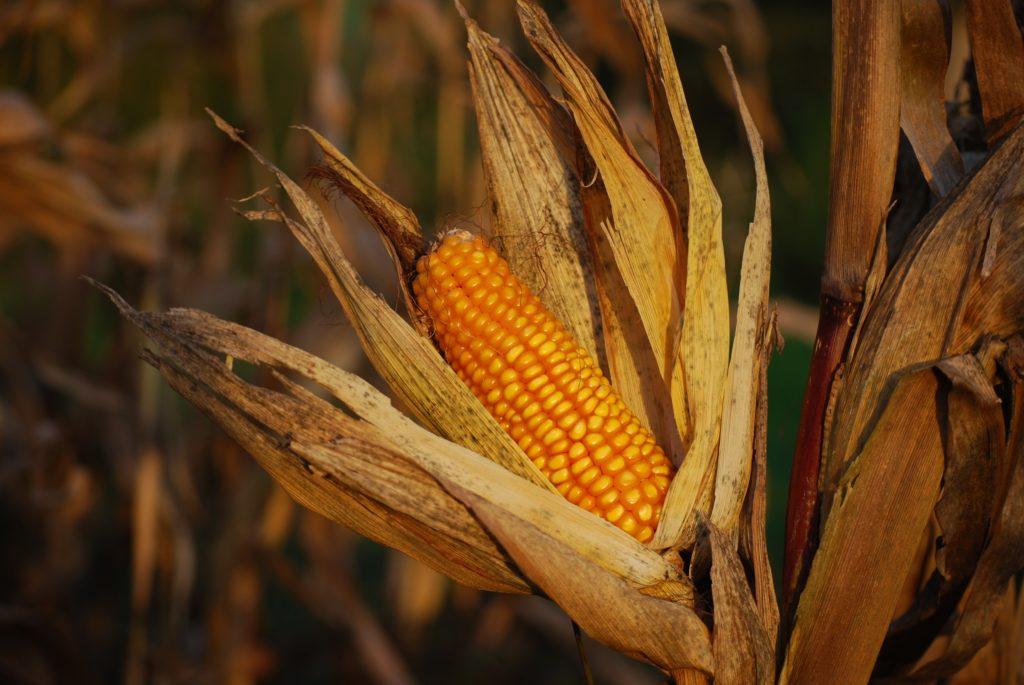
Growing corn is one of the most important aspects of good homesteading. Freshly harvested corn is an incredibly satisfying crop and can taste so much better than store bought corn. Knowing when to harvest corn can be crucial to the outcome of the crop.
If you’re new to growing corn, you might be looking at your tall stalks and thinking – when can I finally do something with these?
We’re going to answer that for you – let us take you through a handy guide of when to harvest corn, along with some other useful tips!
The Basics
Knowing exactly when to harvest corn is the crucial aspect of this.
The first thing to know is that you’ve got to pick the corn ears when they’re at their prime flavor. When the ears have become rounded – that’s normally a good indicator of harvest time.
Around the three week mark after silk appears, you will notice that the silk has become brown while the husks remain green.
When inspecting the stalk, you’ll notice that there should be an ear at the top of it. If you notice one lower, it might mature at a slower pace.
The critical thing to note is the “milking” stage. The way to assess this is to pierce one of the kernels and see if you notice a milky substance coming from it. If it is – brilliant! This is good to harvest.
If not though, you may notice a more watery liquid seeping from it.
This means the ear isn’t ready yet – but don’t worry! Just give it some more time to mature.
Don’t wait too long though – if you’ve reviewed that there is no liquid whatsoever, you’ve allowed too much time and it cannot be harvested.
It’s also important to note that once the ear has been opened or pierced – it can now be a target for pests.
The more experienced you get with growing and harvesting your corn though, you’ll understand the times to harvest much more. It’s all about practice!
Picking Sweet Corn
A good tip for harvesting corn is to do it first thing in the morning. You should grab the ear and extend it, then twist it and pull it off.
When corn is at its milking stage – you should harvest it so that you don’t miss your window of opportunity. It’s a good idea to only grow as much as you’ll need, so not to have too much wastage.
However, by being entirely self-sufficient – if there is any wastage with your corn, consider feeding animals or using the corn remnants in a compost heap.
Composting is an environmentally friendly way to rid yourself of wastage and it can create an incredibly useful fertilizer for your land.
After you’ve harvested the corn, remember to pull up the stalks entirely and place them in your compost heap.
What About Storing The Corn?
The fresher the corn, the better the taste. You may want to boil some water during the harvesting and place the corn in, to try and cement that flavor.
The sugars in corn will soon alter into starch which will affect its overall flavor.
Storage really depends on how long you’re planning to keep the corn. If there are a number of you – the best option is not to store corn, but consume it straight away.
However, if this isn’t possible – you can refrigerate corn for around a week. If you’re planning to keep the corn any longer than this, you’ll want to freeze it instead.
It’s a good idea to use corn in cooking so that you can maximize its use. Consider making a tasty soup or stew.
You can make a large batch and freeze any leftovers, which is one of the best ways to reduce any potential wastage.
The added advantage of freezing is that the sugar to starch process is significantly reduced in terms of the time it takes.
Remember to give your corn plenty of room in any storage as corn can overheat in husks that are tight – so it’s better to keep them in individual layers.
Growing Corn Again
60 degrees Fahrenheit is the ideal soil temperature for planting corn.
If you’re living in a particularly cold area, you can opt to use plastic sheets on the soil until the ideal temperature is reached – and then remove it later.
You will need to use about an inch of water each week but this will differ depending on your climate. Avoid watering them from the top downwards as this can affect pollen and cause problems with the overall growing process.
You’ll want to avoid harmful pesticides and choose instead to use a mix of vegetable oil, water and washing liquid. This will get rid of and prevent pests such as corn earworms, and it won’t harm the corn.
Why Bother Growing Corn?
For homesteaders, corn is a fantastic crop to grow. It’s been a staple of American life for centuries and it continues to do so.
Corn is a grain and is incredibly nutritious. It is high in fiber, minerals, vitamins and antioxidants. It is a great source of vitamin B12, B5, B1 and protein.
There are a variety of corn types you can grow. Sweet corn is a tasty and healthy food that most people can enjoy as part of a balanced and healthy diet.
If you’re growing flint corn – you will likely be harvesting it to make popcorn or using it as decoration. Either way – this type of corn has plenty of uses.
Some people choose to grow field corn, but you cannot eat it. It is normally a source of food for livestock.
The Cream Of The Crop
If you follow these tips, you should be able to enjoy some healthy corn. As with anything, the more you do it – the more experience you will get and the better you will be at harvesting corn.
Corn is one of the best crops you’ll ever grow, so getting it right is important.
We hope you enjoyed reading, and you harvest some tasty corn!
Happy homesteading!
